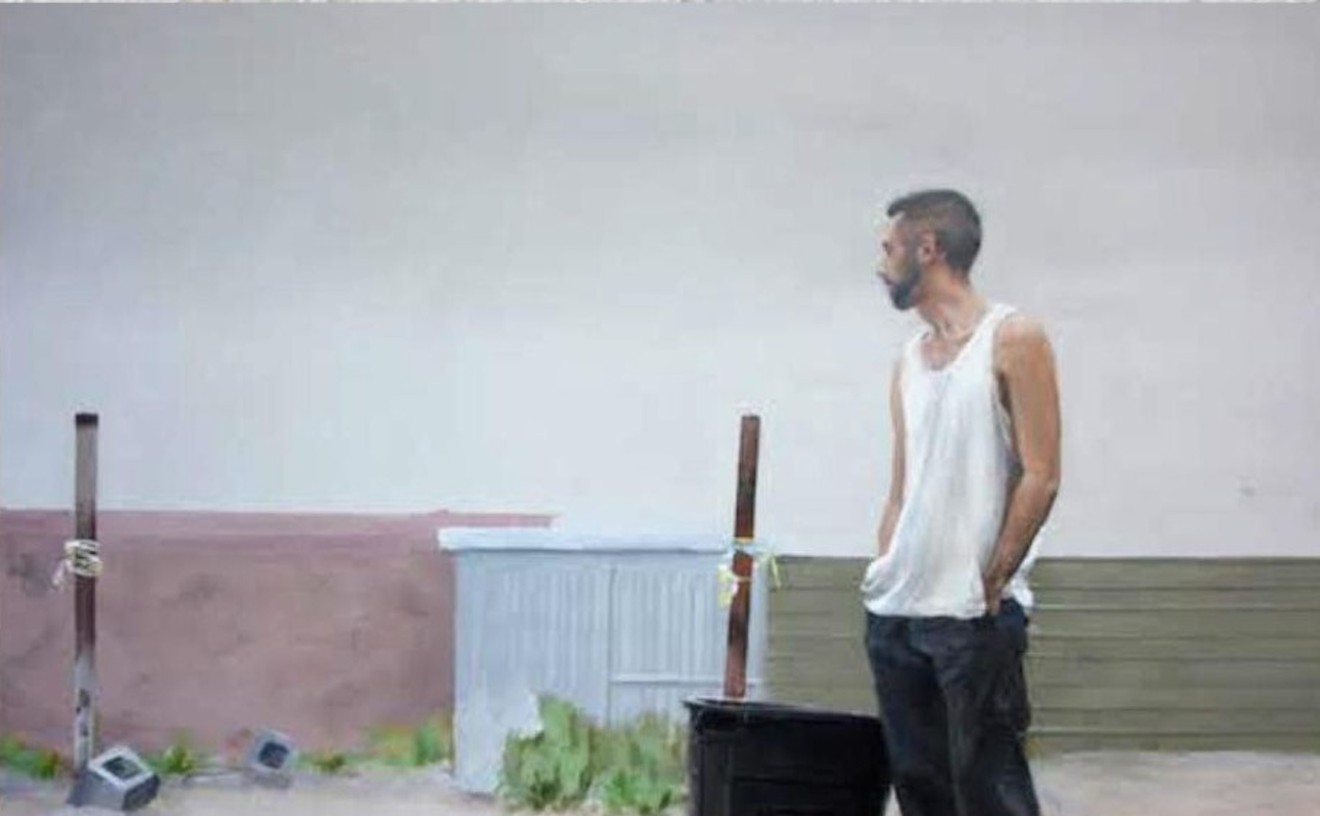Upon ending a self-imposed isolation of more than 250 years, Japan opened its doors in the late 19th century to Western travelers eager to explore its heritage. Female artists were among the original pioneers, setting out to Japan on exotic travels and honeymoons where they'd find themselves enraptured by the distinct style of Japanese art.
"Echoes of Japan," a new exhibition at the ASU Art Museum, profiles the work of Western women who traveled to Japan in the late 19th century to learn and practice printmaking.
See also: Tilt Gallery Presents Pop-Up Photography Exhibition "Impromptu" in Scottsdale
Co-curator Jean Makin describes these delicate studies of Japanese life in one word: tranquil.
It is a small show, with only a handful of artists on display. The collection mostly is made up of prints lent by Laura Petrie and Waynor Rogers, owners of the Petrie-Rogers Gallery, paired along with some pieces from ASU Art Museum's own print collection. Rogers became interested in collecting woodblock prints while serving in the U.S. Marine Corps in Asia.
Makin and curator Shiloh Blair McMurtrey worked on putting the exhibit together as part of McMurtrey's studies as a doctoral candidate in art history at the Herberger Institute. ASU's extensive print collection lends students the chance to study and curate many of their own shows, an opportunity not offered in many art programs around the country.
McMurtrey lived in Japan for a year and a half and learned the language and developed an interest in Japanese woodblock prints. Unlike American printmakers, Japanese woodblock artists hired masters who created the woodcuts and transferred the original designs to paper. In this respect, she says, the American view of the artist creating every detail of the work by hand is quite the opposite of Japanese tradition.
Still, the talent of the design falls on the artist, and these artists have undeniable talent. Two of the most expressive pieces in the exhibit are from Helen Hyde, an American who traveled from San Francisco to Japan on a six-month trip that turned into a 14-year stay. She is best-known for her mother-and-child scenes like in Cherry Blossom Rain (1905), which pictures two mothers and their small children crouched under an umbrella walking through a row of cherry blossoms. Her subjects were those considered "appropriate" for women artists in the 19th century, according to McMurtrey, something that attributes to her easy adaptation into ex-patriot society in Japan.
The work of Elizabeth Keith, a Scottish-born artist, offers a contrast to Hyde's high society Japanese portraits. Keith traveled away from the cities with missionaries to study rural life, getting the chance to draw subjects not often visited by foreigners. Her piece, Chinese Matriarch (n.d.), sits in the corner of the gallery and is one of her best works. The face is wise and etched with lines to give it a somber disposition. The detail of her work is fascinating considering her artistic skills were self-taught.
There is plenty of variety in the pieces selected for the show. It is clear that each artist has her own personal style despite the common themes. For example, Bertha Lum, an American artist born in Iowa, portrays Japanese folklore in many of her prints. This adds an otherworldly quality to the dramatic scenes she illustrates.
This is a quiet exhibit -- one that makes you want to walk around speaking with a whisper -- so don't expect to go into it and be blown away by any one particular piece.
In addition, if you are making the trip to see "Echoes of Japan," that is all you will be making the trip for because most of the galleries at the museum are under reinstallation for the spring shows. It might be worth it to wait a few weeks until there is more on view.
Still, the show's simplicity and detail have their merits, and it is definitely worth checking out if you are at the museum to see any of its larger shows.
"Echoes of Japan" runs through Saturday, May 17, at ASU Art Museum. The museum is open Wednesday through Saturday from 11 a.m. to 5 p.m. and Tuesday 11 a.m. to 8 p.m. Admission is free of charge.










